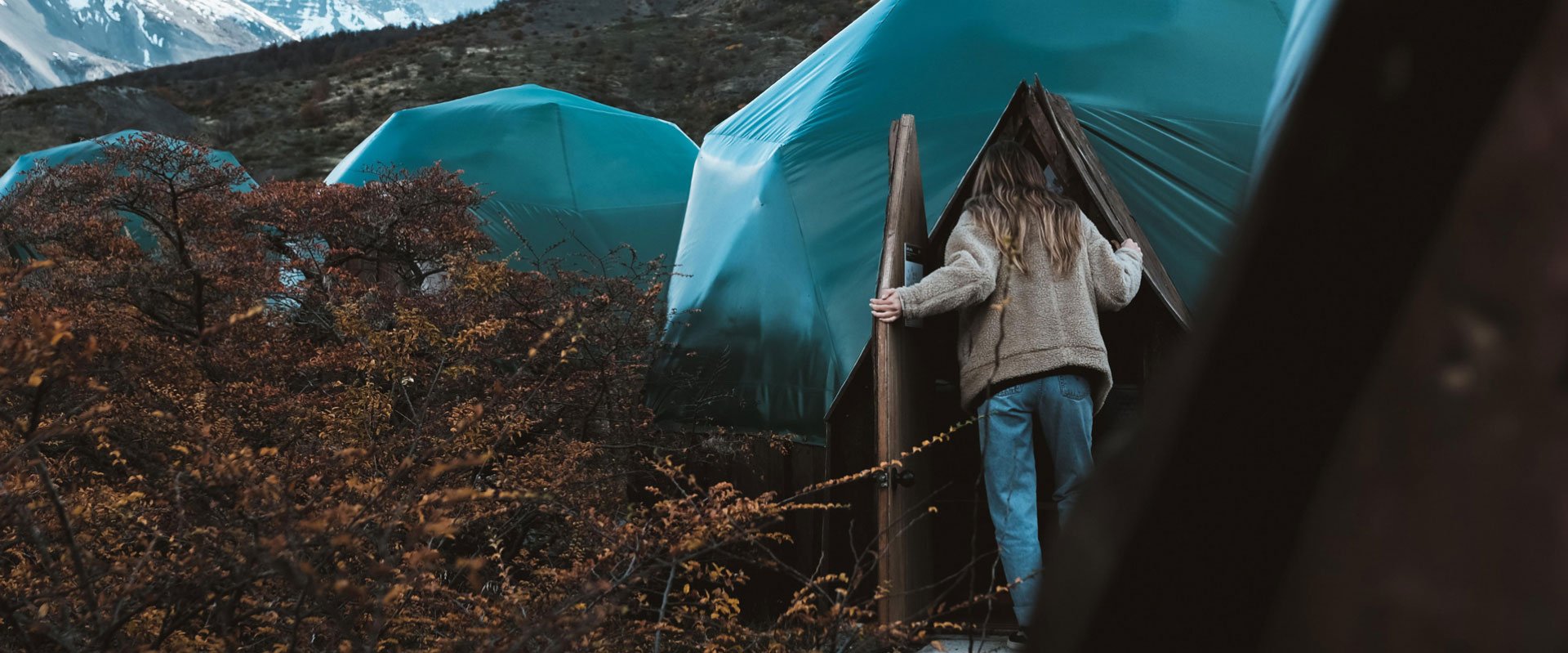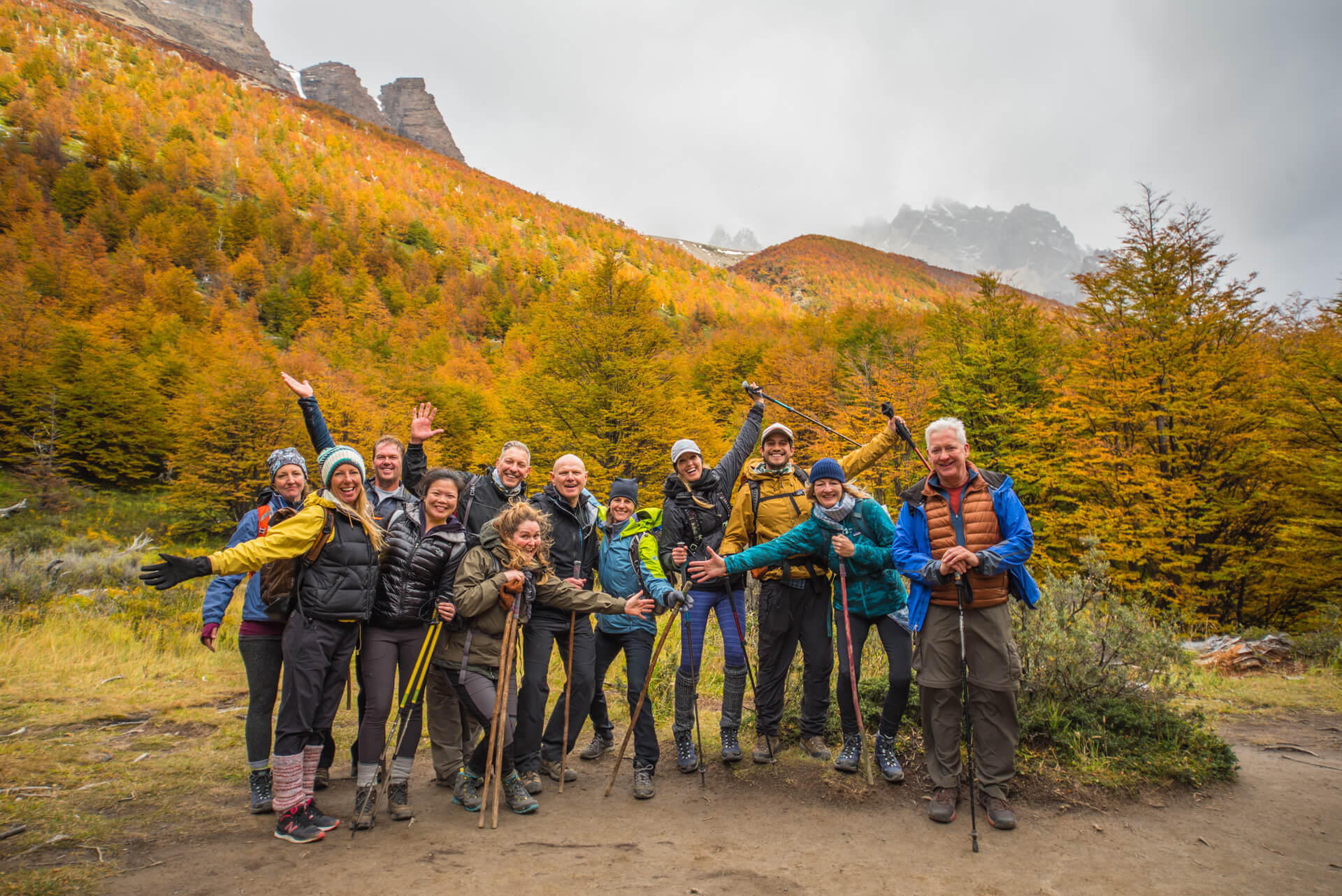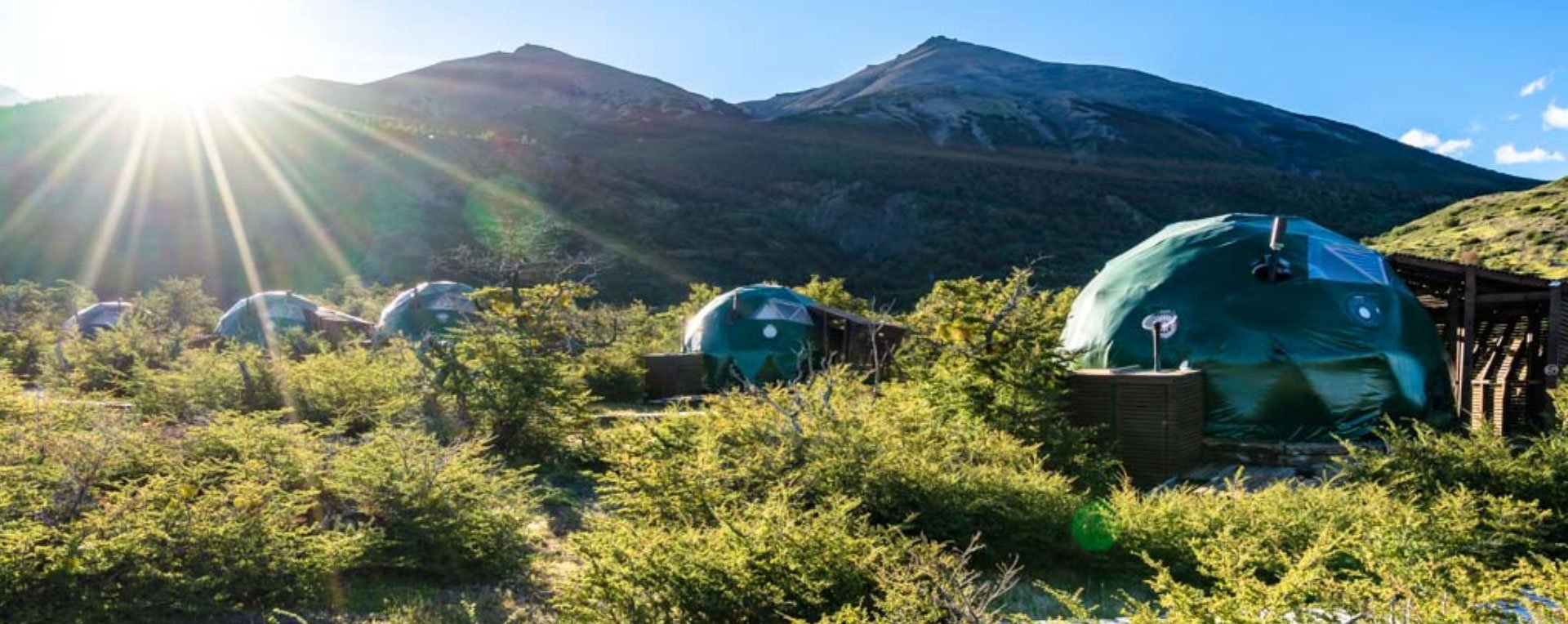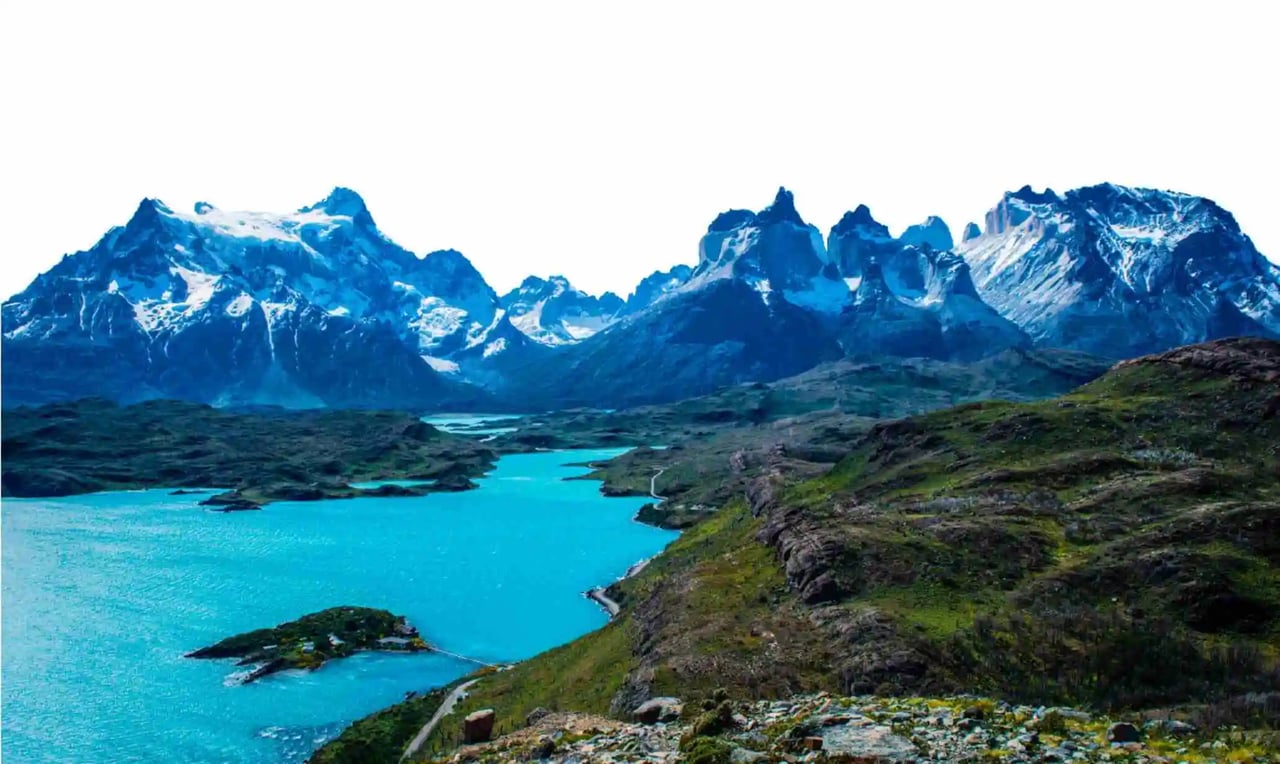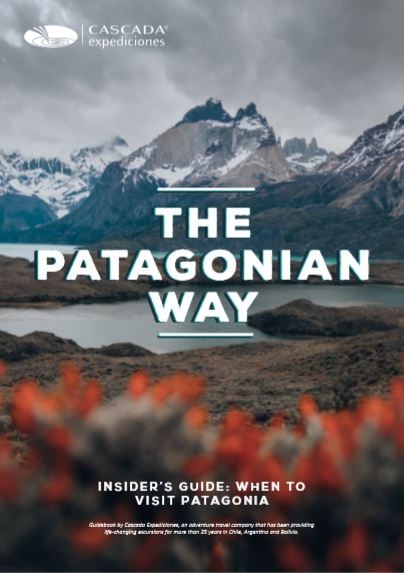OK, I agree. Patagonian Fall does not necessarily evoke the permanent sunshine you may find in Heaven. But if you thought Fall is the time of permanent rain and no blue sky at all, I will prove you wrong with just a bunch of pictures and a good story.
In March, Torres del Paine National Park slowly recovers from the waves of hikers in High Season (November to February). The strong winds are scarcer, enabling the mountains to reflect on the lakes like magic mirrors. The trails are still, almost mystic as you can walk slowly while enjoying the silence – the real one. Photography aficionados will find the place a gift; no need to edit the pictures, nature will do it for you! As for the ones who do not take pictures: you will never forget the hundreds of colours of the world’s most southerly forests in Autumn. In brief: Autumn in Patagonia is Heaven on Earth, without necessarily having Heaven weather every day (well, it happened to me, I know).
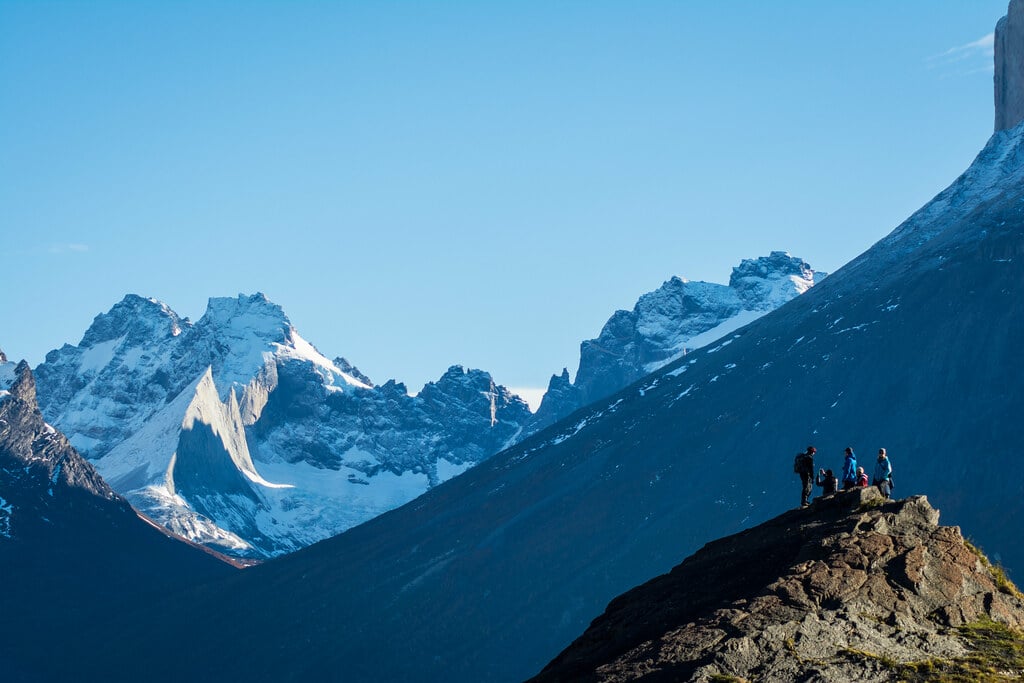
Day 1 - Entering Heaven : Welcome to Torres del Paine!
Itinerary: Travel from Punta Arenas to EcoCamp Patagonia, Torres del Paine National Park
April 2015. In our way to Torres del Paine National Park, we crossed the grassy plains the locals call pampa. The devastating Patagonian winds literally shape the seemingly endless steppe. We left Punta Arenas in the early morning and drove about 3 hours through the Patagonian desert. Remote peaks slowly appeared on the horizon and as we reached Puerto Natales – the entrance door to the mountainous area – I understood Patagonia was a place of contrasts. Flat lands embrace the vastness of the mountains just like you can find sunshine the morning and experience a snowstorm at night.
Our guide Alejandro received us with peace in his eyes.
He was the kind of man whose wisdom has been forged by nature. We got the first contact with the Torres del Paine Map and realized 2,422 km2 (935 sq mi) was big, indeed. Lucky us: the forecast was good for the next days. We knew we could not trust the weather in Patagonia, but yeah, the sun was shining anyway.
So we started the 112km (70mi) drive to the park and had an insight into the Far South Indian Summer as the sun was shining on mysterious red forests. We passed near Argentina and quickly entered Torres del Paine where hundreds of guanacos gave us a warm welcome into Heaven. For everyone in the van it felt like an accomplishment. The mountain range reflected on Sarmiento Lake – the biggest lake in the National Park – and when the towers appeared my heart skipped a beat.
The green domes are like an eco-friendly hobbit village.
They are located at the foot of exotic named mountains: Almirante Nieto (2670m/8759ft) Cerro Paine (1500m/4921ft) and of course the towers, the tallest reaching 2850m/9350ft. I stooped my head to enter my Standard Dome where I would spend the night. It was a bit cold, but I knew that was Patagonia. And it was actually exciting to feel that kind of cold; a healthy and wild cold that makes you feel you in a truly natural setting. Into the wild.
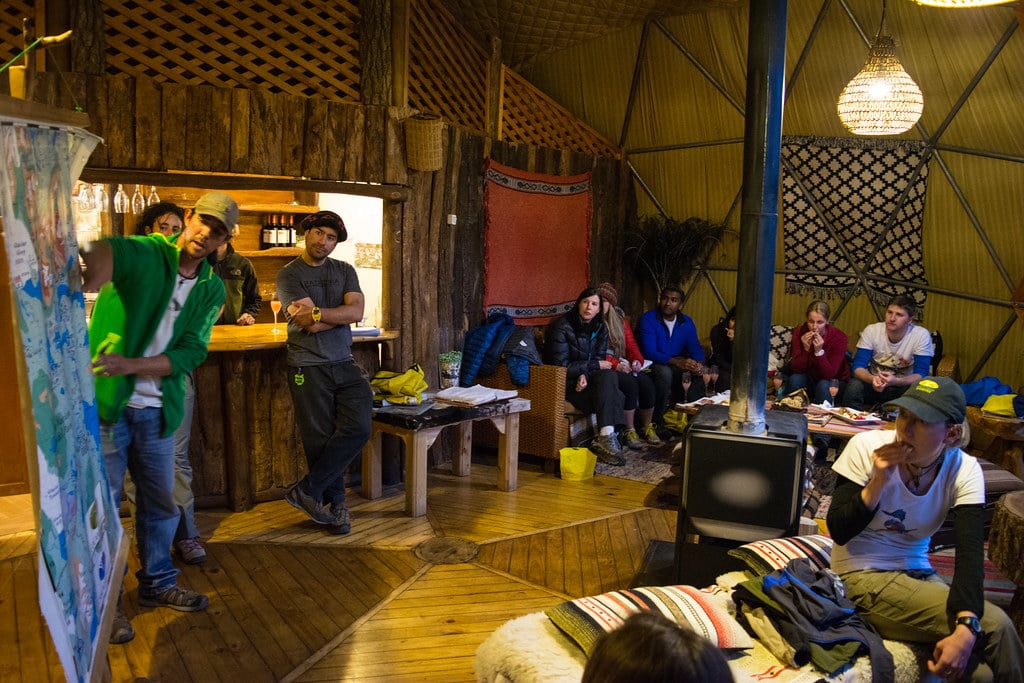 First briefing of the trek (with a good cocktail)!
First briefing of the trek (with a good cocktail)!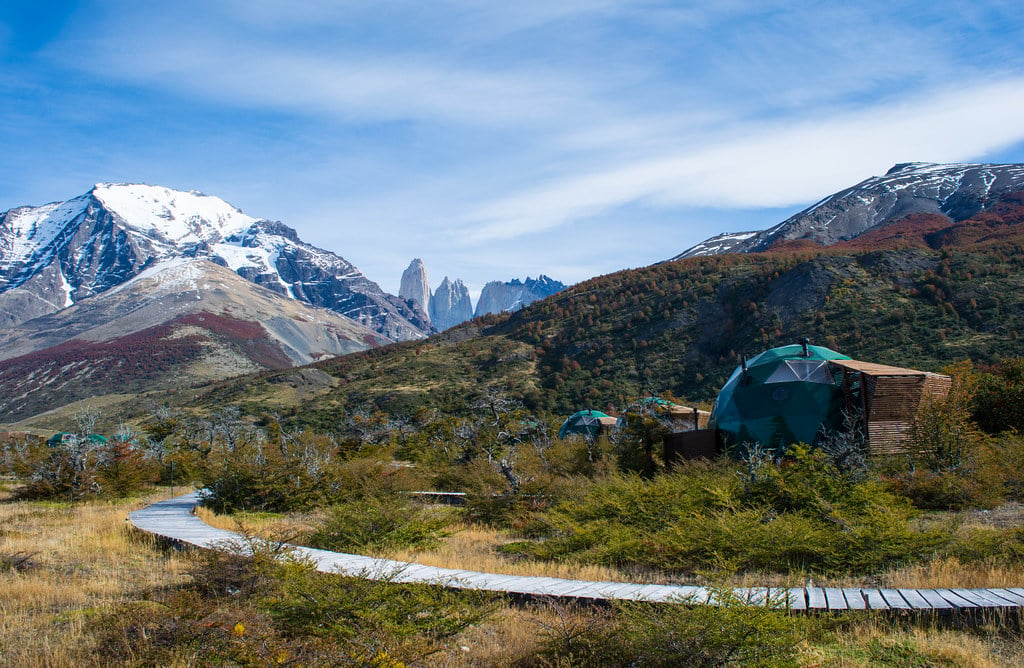 EcoCamp in autumn
EcoCamp in autumnWe sat down in the Community Domes – the social hub of EcoCamp – and enjoyed a Pisco Sour as the guides showed the next day’s destination. I got to know the other hikers – from Australia, Canada, United States and England – and yes, they felt like me. Being here was luxury.
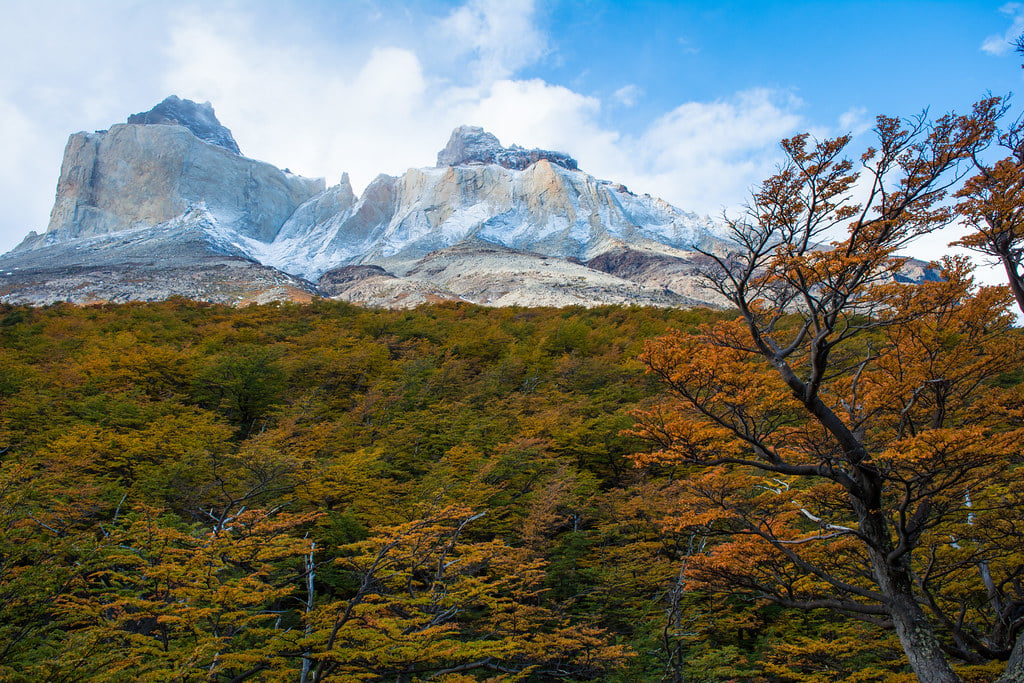
Day 2 – Life and Death in French Valley
Itinerary: French Valley – Paine Grande refuge (18km/11mi – 6 hours approx)
As we drove from West to East, we could spot some extreme places on the mountain range. Here, a lonely glacier surrounded by giant granite peaks. There, Los Cuernos – a mix of Granite and Sedimentary, elegant as the peaks point towards the sky. We had time before the navigation so we undertook a short walk to Salto Grande, one of the park’s highlights.
The deafening sound of the waterfalls was a demonstration of the power of nature.
In front of us, French Valley, at the foot of Paine Grande – the park’s highest peak (3050m/10000ft), literally a rock monster with tremendous glaciers at its top. The navigation starts in a place called Pudeto, a pier at the Shore of Pehoe Lake whom blue waters were as still as a cup of tea. The 30-minute travel to the Lake was outstanding.
The French Valley hike starts from the Paine Grande Lodge, a cosy mountain hut where W Trek and Paine Circuit hikers also love to camp. Its surroundings are a mix of pampa and burnt forests, as in 2011 a terrible fire burnt 176km2 (68 sq mi) because of human negligence. Death. We actually started the hike on these desolate landscapes – even though I admit the mix of intimidating mountains and burnt trees has something pretty interesting (but, please…no more fires).
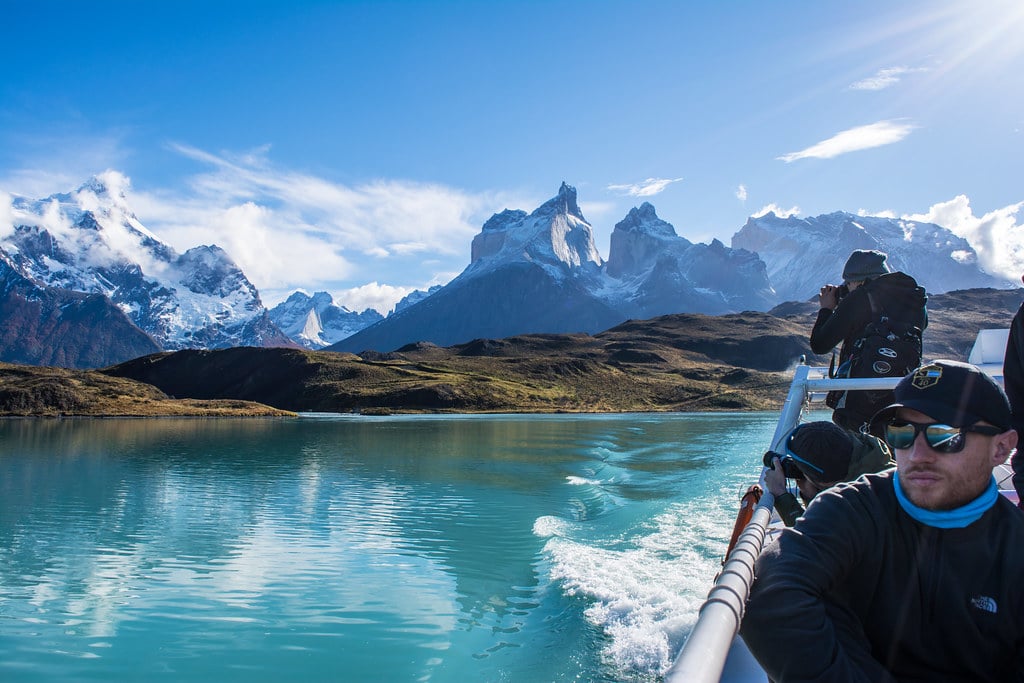 The boat on Pehoe Lake...
The boat on Pehoe Lake...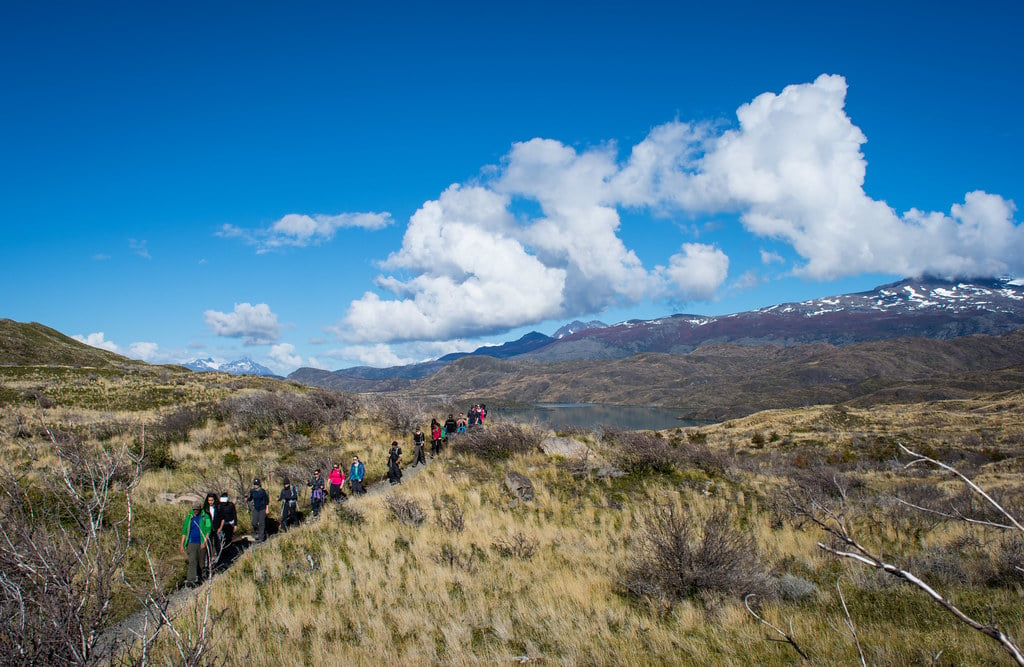 First steps through the pampa
First steps through the pampaThere we stopped at the shore of Laguna Skottsberg – one of the best lookouts of Los Cuernos – and slowly rediscovered the colours of Autumn. Fortunately the fire had spared thousands, millions of trees that were dressed with yellow, green and red leaves. In French Valley, the whole forest was majestic. Life.
We crossed a bridge above the Frenchsman River and started hiking up; never too far from the violent stream of the river. Suddenly a loud humming crossed my body. Was it an Earthquake?
“Avalanche!”.
At the other side of the valley, on the Paine Grande Mountain, a huge chunk of ice had fallen of the mountain. No time for picture. The strength of the elements almost paralysed me. Of course, we were safe here but witnessing such a spectacle of nature was mind-blowing. It appears that avalanches happen on a daily basis in French Valley.
After one hour hiking uphill we reached the lookout – a 360 degrees stunning view with otherworldly peaks and heaps of blue lakes down the valley. It was a painting. Such a good painting, and we were part of it. I gathered with my fellow hikers, we hugged, so happy to be here. Crossing the world was worth it.
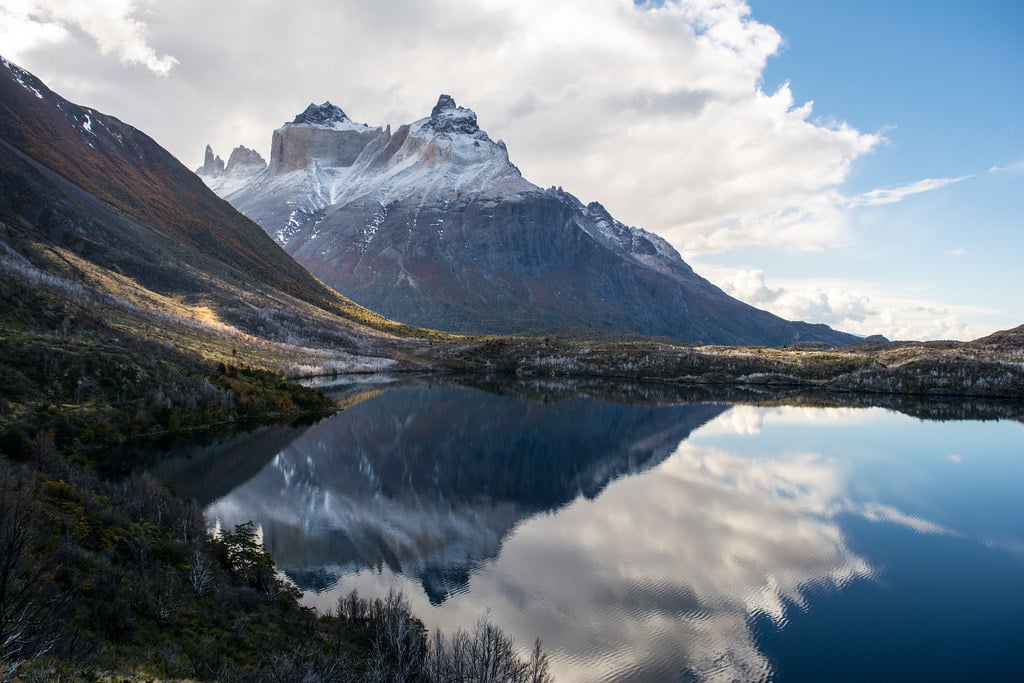 Lago Skottsberg: a vision of paradise
Lago Skottsberg: a vision of paradise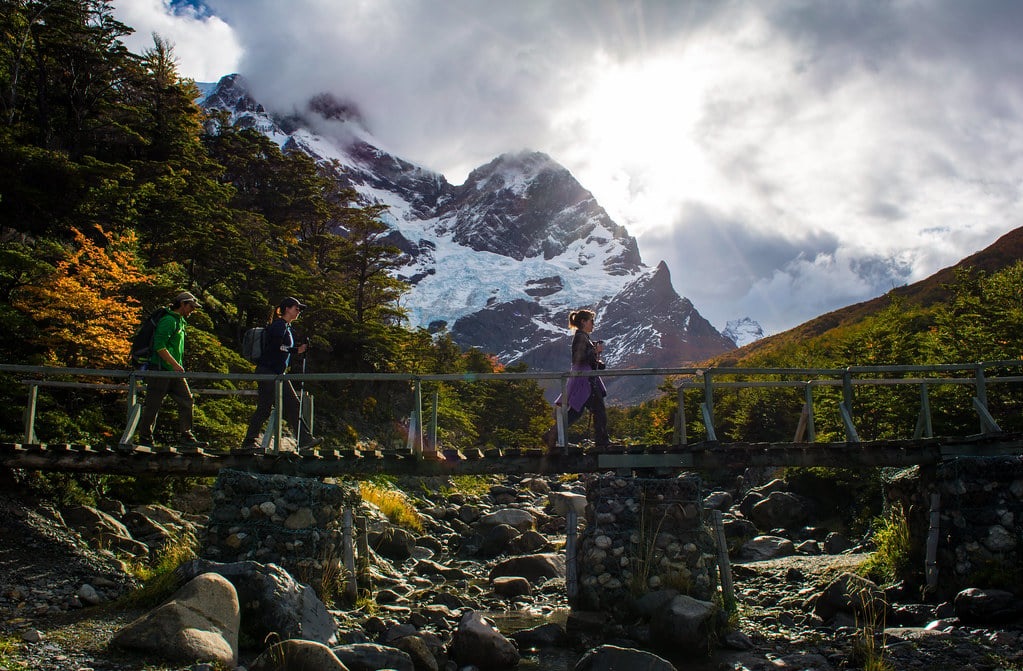 The entrance to the famous valley is a cool bridge!
The entrance to the famous valley is a cool bridge!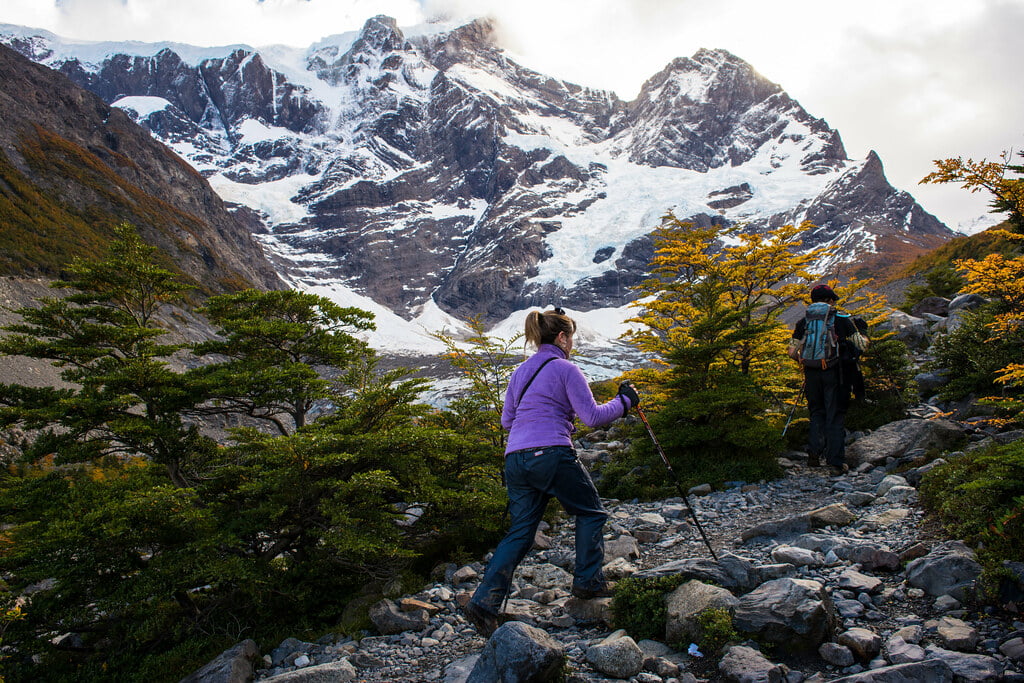 Hiking along the glorious French glacier...
Hiking along the glorious French glacier...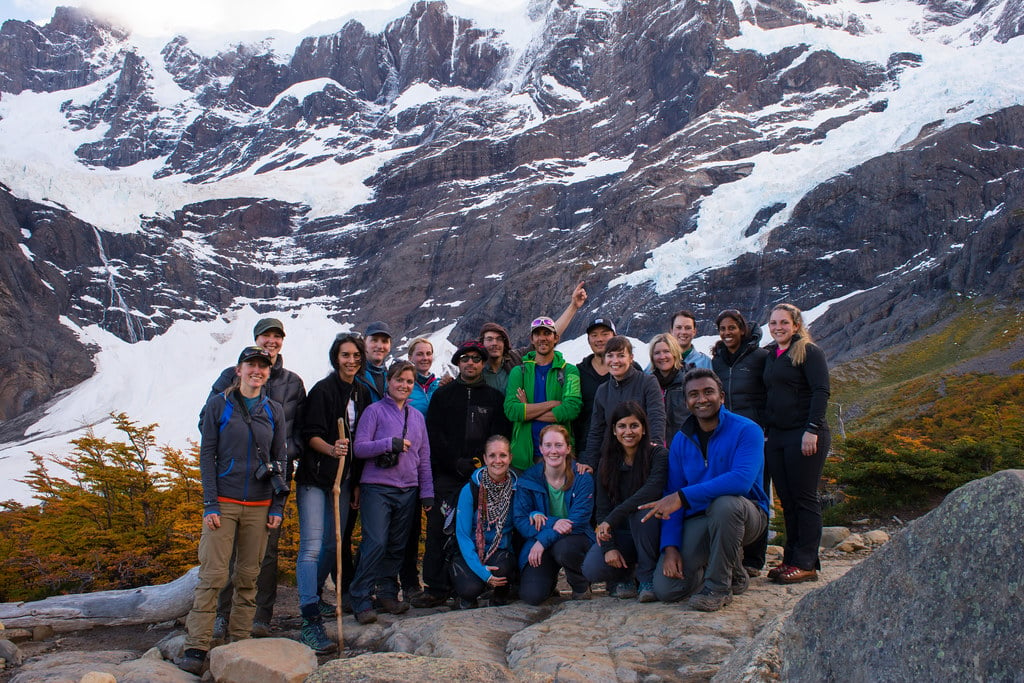 A well-deserved group picture!
A well-deserved group picture!We hiked back chatting and spotting a condor. At night a fresh bier (unmissable) was waiting for us in the refuge. Perfect time to toast while talking about today and tomorrow.
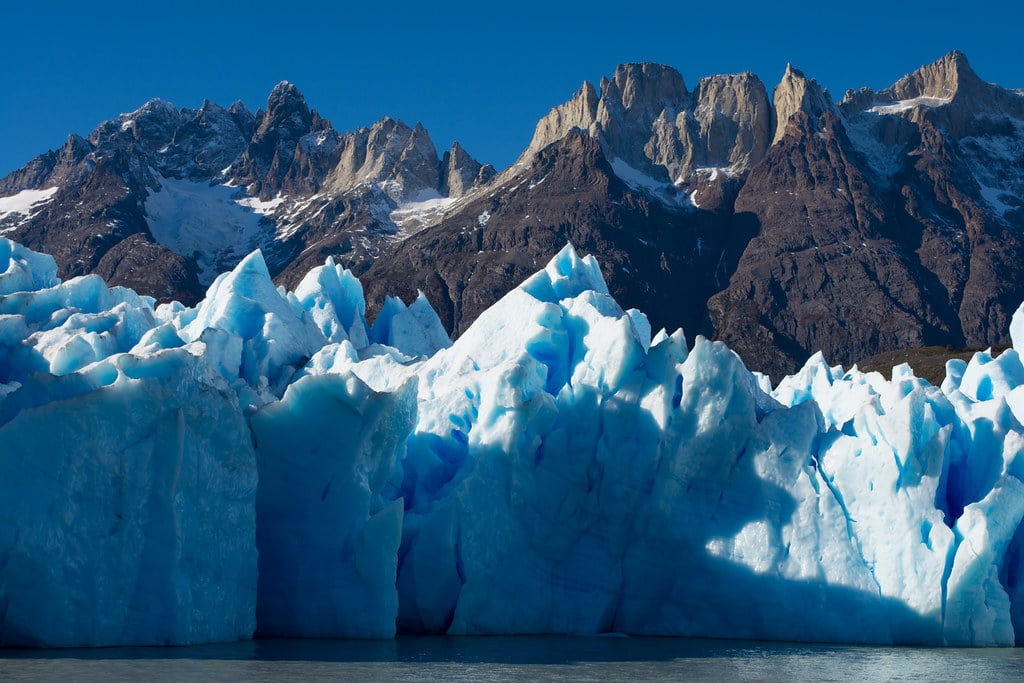
Day 3 – Green, Orange, Red and Blue at Grey
Itinerary: Paine Grande refuge - Grey Glacier (14km/8mi – 4 hours approx)
The light morning breeze felt like a call to walk further, through the mystic and unknown immensity of Patagonia, without a finish line. If we hiked in a straight line for about 20 kilometres, we would meet a huge ice wall; one of the most fascinating nature borders on Earth: the Southern Patagonian Ice Fields. These ice fields are kinda bad-ass: a reminder of the last glacial period, they are the biggest freshwater reserve on Earth outside the poles. And today, we would head to Grey Glacier: one of the ice fields’ most famous glaciers.
“Guys, the area we’ll see today is infamous for its precipitation. But it seems today is your lucky day”
I was sure Roberto, our guide, knew what he was talking about. But every day until now was our lucky day! We hiked through a moon-like valley at the foot of the Paine Grande Mountain. For a while, I thought about all the braves that lost their lives climbing this rock giant. Only 3 times in history have people reached its icy summit. The beauty of the setting quickly brought me back to happier thoughts.
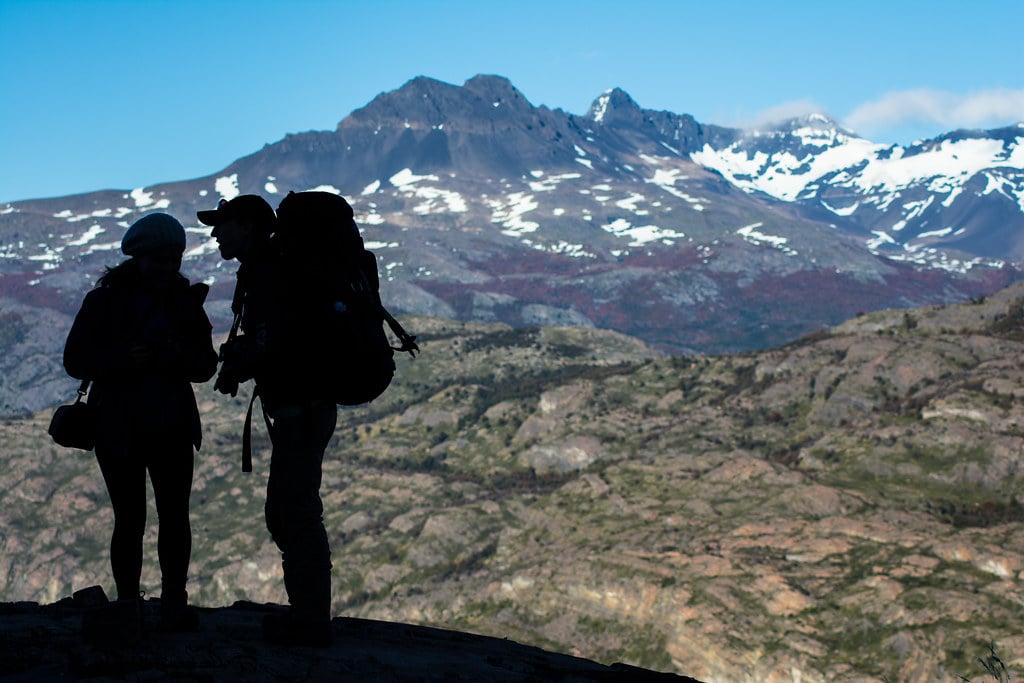 The view on the surrounding mountains is literally impressive.
The view on the surrounding mountains is literally impressive.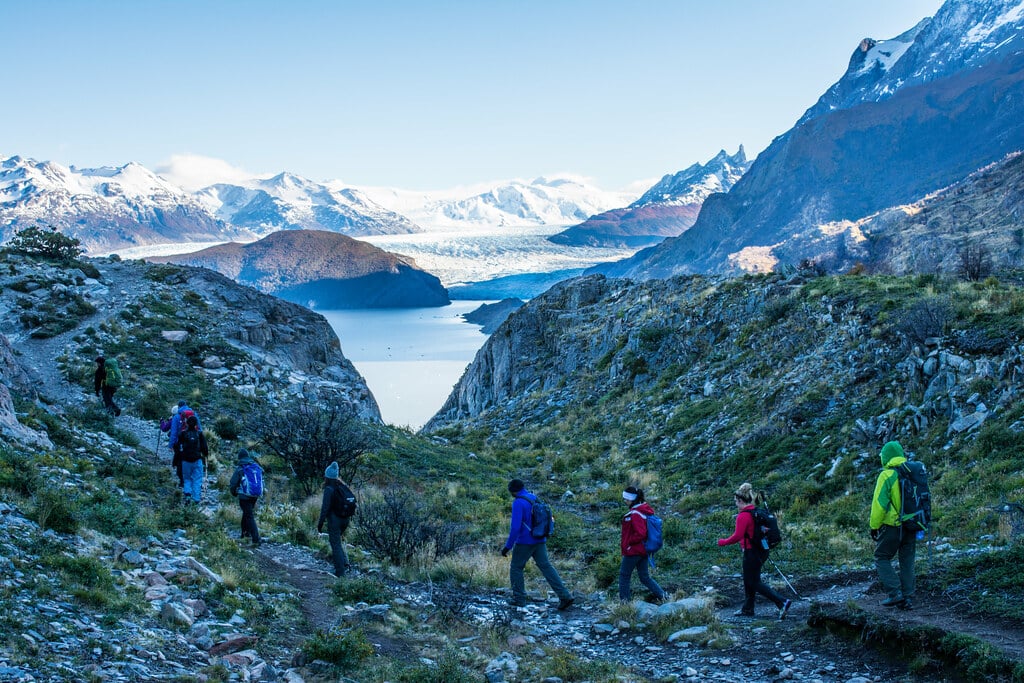 ...and Grey suddenly appeared.
...and Grey suddenly appeared.We reached the first lookout of Grey Glacier after about an hour. The ice extended the horizon. It was magical. A fellow traveller next to me had watering eyes. He was probably feeling tiny in this world, just like I was. We crossed a tree cemetery as we passed the place where the terrible fire of 2011 started. The contrast between the ice and the ashes was seizing. I wonder how it must have been with the flames.
“Boy, this is the first time I see a glacier. I will never forget that.”
A young woman whispered. She was also contemplating the forest. Patagonia is really unique in the way glaciers are low in altitude. They meet the austral forests. And now, in the heart of autumn, the green, orange and red of the surviving forest embraced the white, blue and grey of Grey Glacier. Incredible.
After four hours we finally reached the refuge. I could barely stay calm as I knew we would soon embark on a boat to get closer to the glacier. We headed to the nearby beach and put on our life jackets. The boat was small – far from the Titanic, but way better!
We sailed through the silent lake. Incredible icy peaks surrounded the ice fields. We greeted Grey while toasting with a Pisco Sour (not to mention there was glacier ice in it). I could not believe how vast the ice was. The guide reminded me the glacier was retreating quickly (about 100 meters a year). Global Warming is threatening a marvel on the Earth we were lucky enough to witness.
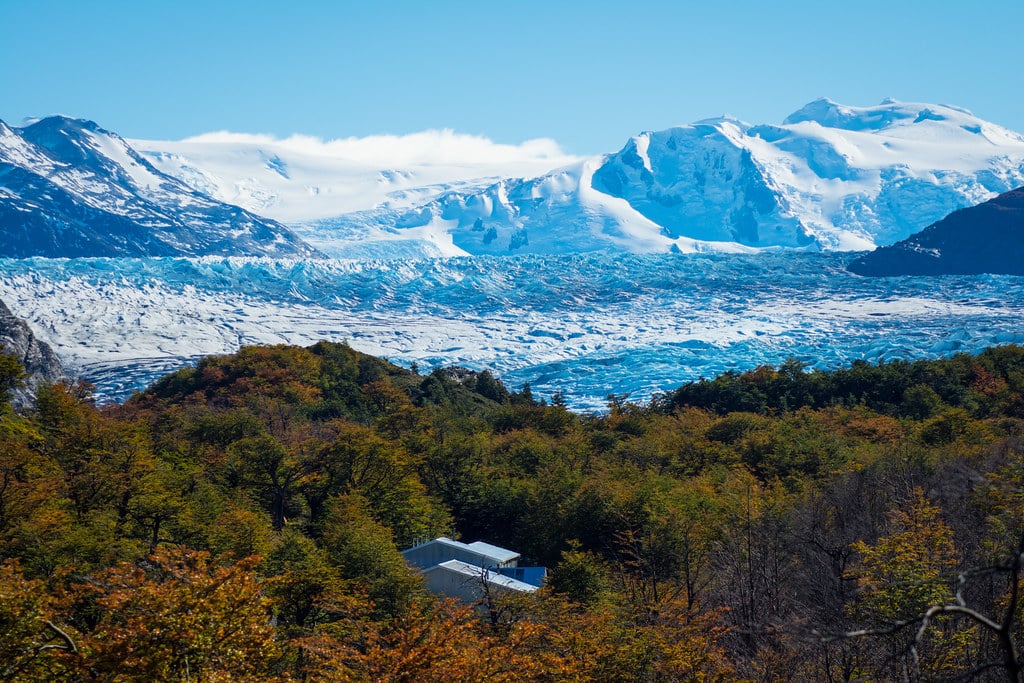 Grey refuge in the Indian Summer.
Grey refuge in the Indian Summer.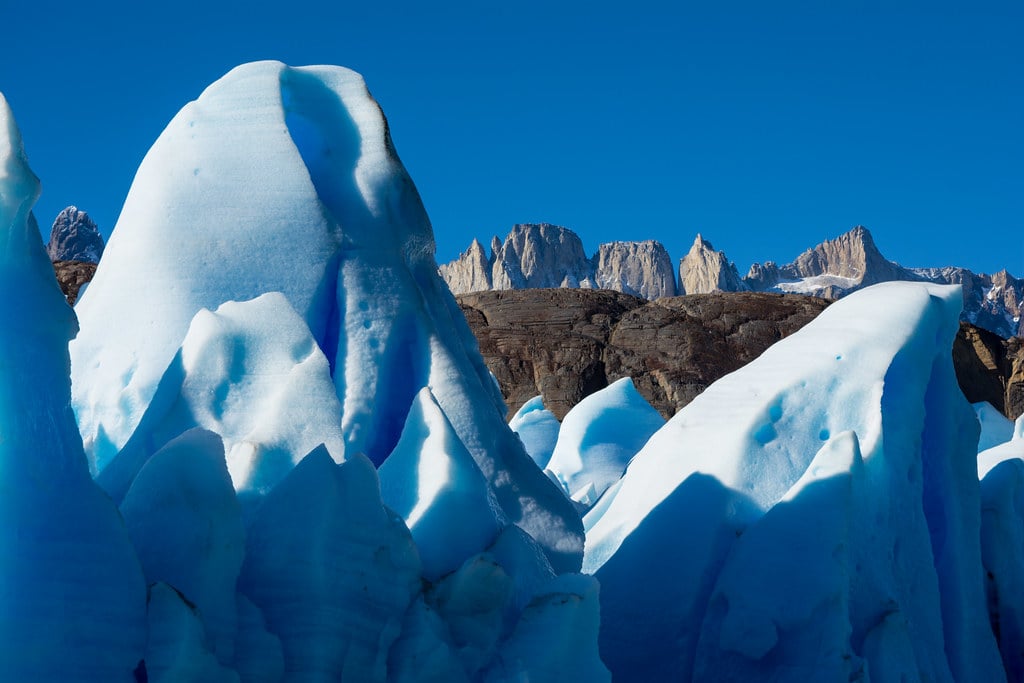 The crazy shapes of Grey Glacier.
The crazy shapes of Grey Glacier.After 3 hours of sailing we came back to our van. The chauffeur asked us if we had enjoyed the hike. The marvel in our eyes was enough for a reply. We drove along the Paine Massive and reached our cosy domes. Night was cold despite the relatively hot day. Sheltered in my hobbit house I gazed at the Milky Way through the window. It was peaceful. From time to time a shooting star drew a line in the sky.
I was microscopic in this world – and it’s what I had been telling to myself all day long.
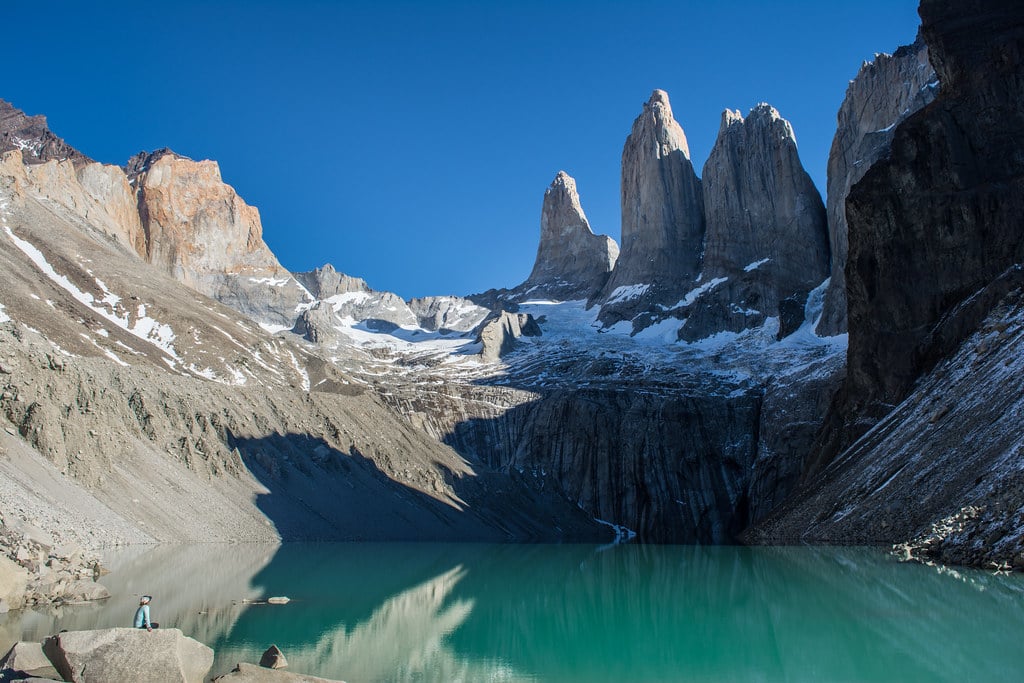
Day 4 – Torres Del Paine: encounter with the towers
Itinerary: EcoCamp - Base Torres - EcoCamp (21km/13mi – 8 hours approx)
As we had the hearty breakfast one of us suddenly shouted:
“Look, there, Mother Nature is lighting our destination.”
Sunrise was indeed painting the famous towers in pink – quite a romantic sight for a start! We left the domes early morning (8a.m) and warmed up through the flat lands. “Patagonian flat” was too good to be true, and we started hiking up after 45 minutes. The higher we were going, the better the setting was. Here and there the lakes of the park started to appear: Nordenskjold, Laguna Amarga, and the Paine River in the distance. A world of water.
We entered the Ascencio Valley through the “Path of the Winds”,
even though the wind we were expecting was totally missing (but not missed). Thanks autumn! A shining red forest came forth. The Ascensio River was roaring further down. We hiked towards the sun. We felt enlightened by the place. Literally.
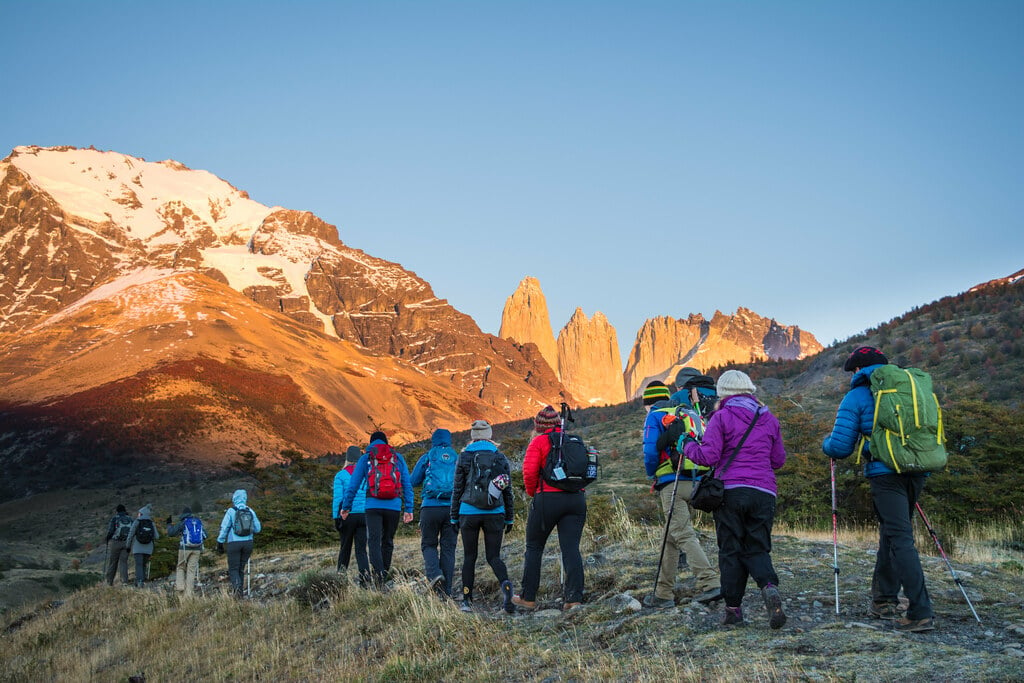 First steps in the sunrise...
First steps in the sunrise...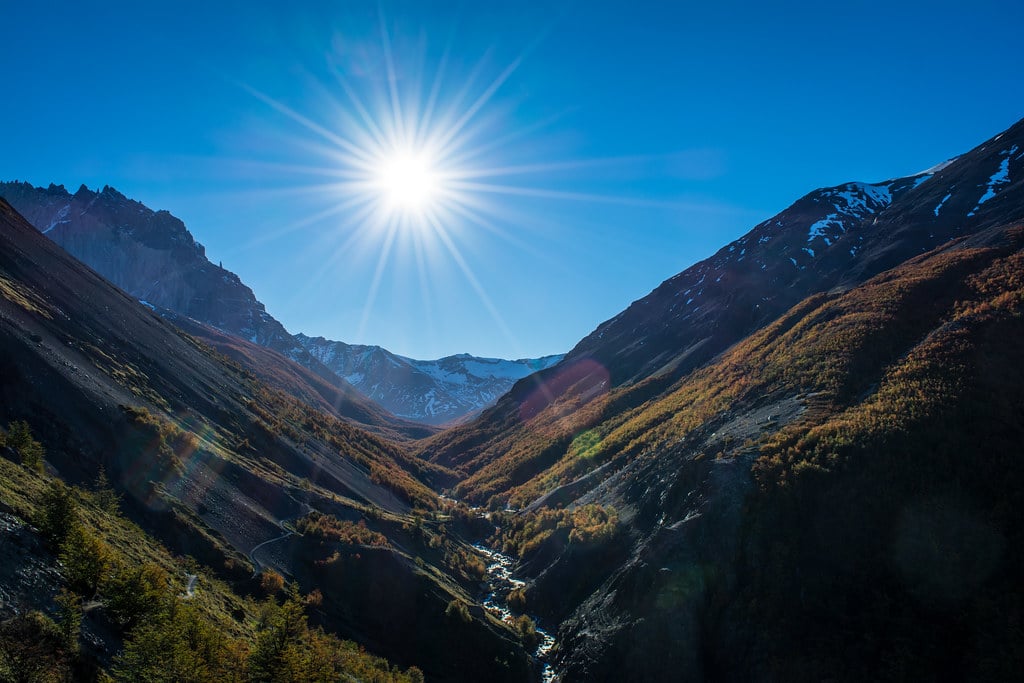 And we entered the Ascencio Valley!
And we entered the Ascencio Valley!A Chilean flag was fluttering near the rustic “El Chileno” (The Chilean) refuge. It was the indicated spot to take a break before entering the Austral forest. I realized we had lost altitude: we were now at the shore of the watercourse, at the very feet of the mountains. But soon we would hike up again.
We crossed a bridge to enter the kingdom of Lengas,
these austral trees that adorn their incredible autumnal trees in March and April. Here they were old, ancient, the ancestors of this valley that was unexplored not so much time ago. The forest was a parade of colours and the canopy did not always let the sunlight come to us. After two hours the path suddenly cleared up and we could see the bottom of the valley in the distance.
“Take some energy. You’ll need it for the ascent
Alejandro, one of our guides, had done this hike hundreds of time. He knew where hikers get tired. Today, he seemed to be surprised by the weather. Not even a cloud in the sky.
So – let’s be honest – the last 45min/an hour ascent is not the back-breaking hike up some people say it is if you go at a regular pace. Take your time. Enjoy the view. Yes, there are boulders and you should hike carefully. Yes, it is not easy. But I loved hiking with the sound of the stream. It was like an “active hiking yoga”. For the last 15 minutes you hike through massive rocks to reach the 800 m.a.s.l. lookout. An epic conclusion for an unbelievable setting.
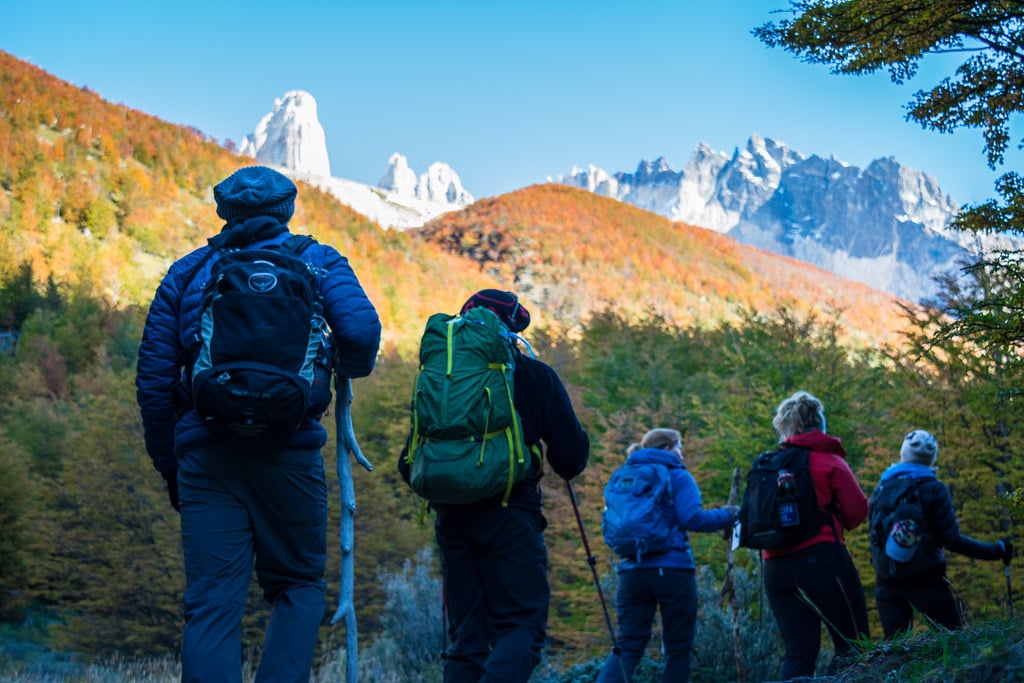 Crossing the forest in Autumn is probably the best thing ever!
Crossing the forest in Autumn is probably the best thing ever!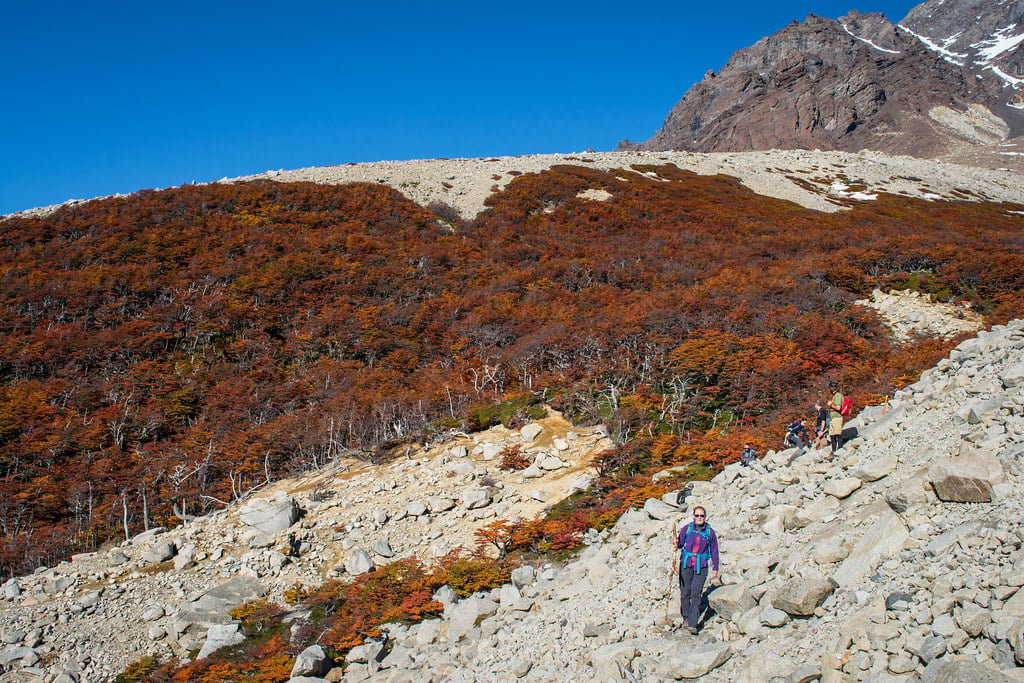 Almost there but with such colors, you'd better take your time and take a look around!
Almost there but with such colors, you'd better take your time and take a look around!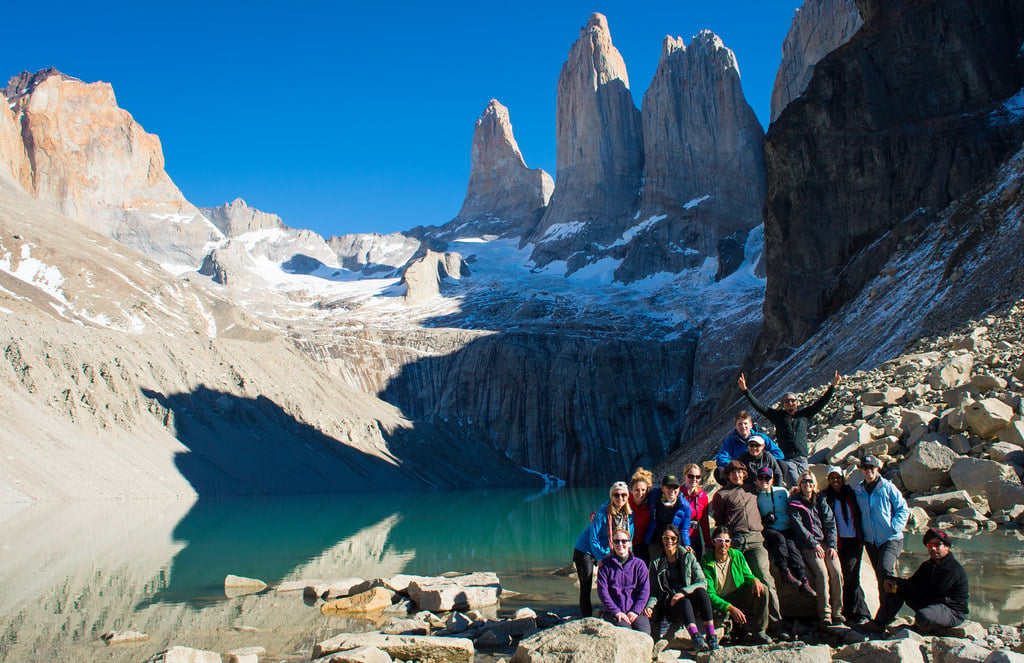 We did it!
We did it!Well, the pictures say almost everything. But what they cannot transcribe is the beauty of being together is such a majestic place. You look at the rock and cannot believe these granite monoliths have been shaped by the erosion of glacial ice.
So you try to define the view with your fellow friends.
It’s fun, impressive, beautiful at the same time. And, because it’s April (the very end of the season), it’s quiet. So you enjoy the trail and the landscape just for yourself.
The fire was crackling in the Community Domes. We felt like at home. And we laughed – I think we laughed all night long with my friends from Australia, England, Brazil, Chile, Canada, and other far away countries.
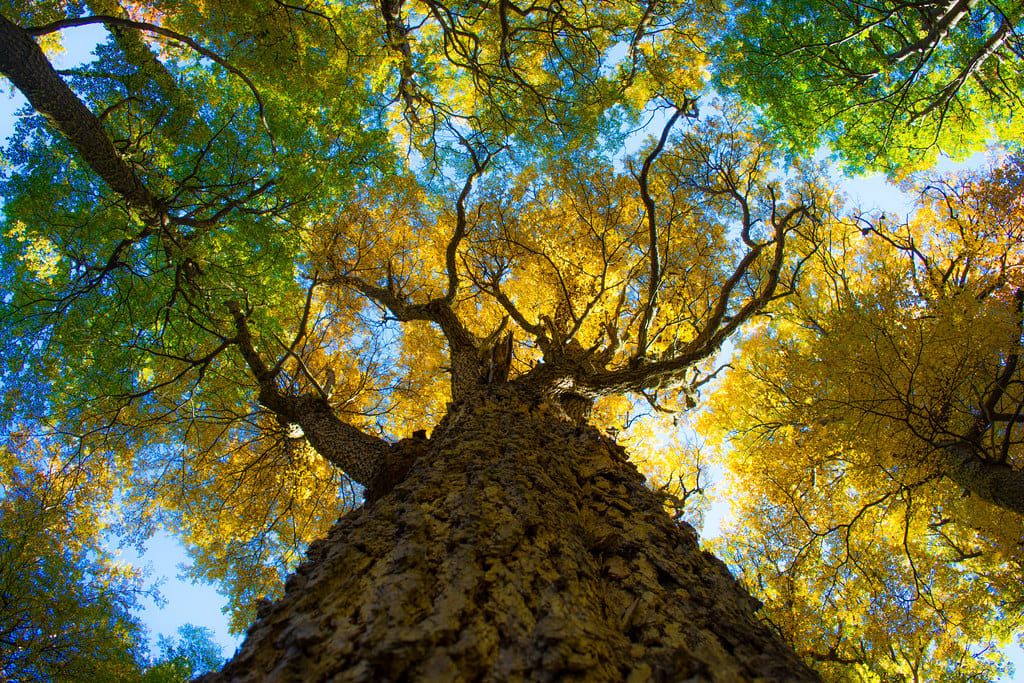
Day 5 – Departure. Hasta luego Torres del Paine!
Itinerary: EcoCamp - Home
From EcoCamp we could see dark clouds far, far away, above the ice fields. The weather would change soon. Winter would come and spread its white mantel on the mountains. We gathered in front of the Welcome Dome. 5 days ago we were all strangers. Now we were a family, united by hiking, gathered with nature. We had gotten to know each other. EcoCamp and the W Trek had made us become friends in just a few days. Our guides hugged us. Most of us would probably never see each other again. But for all that we had experienced together we were all grateful. We would miss the sustainable hotel too. The domes have that indefinable power of gathering people.
Fall was definitely the right time of the year to listen to the silence of nature.
Nature had been our teacher. And we had listen to everything. We would come back home stronger, wiser, happier.
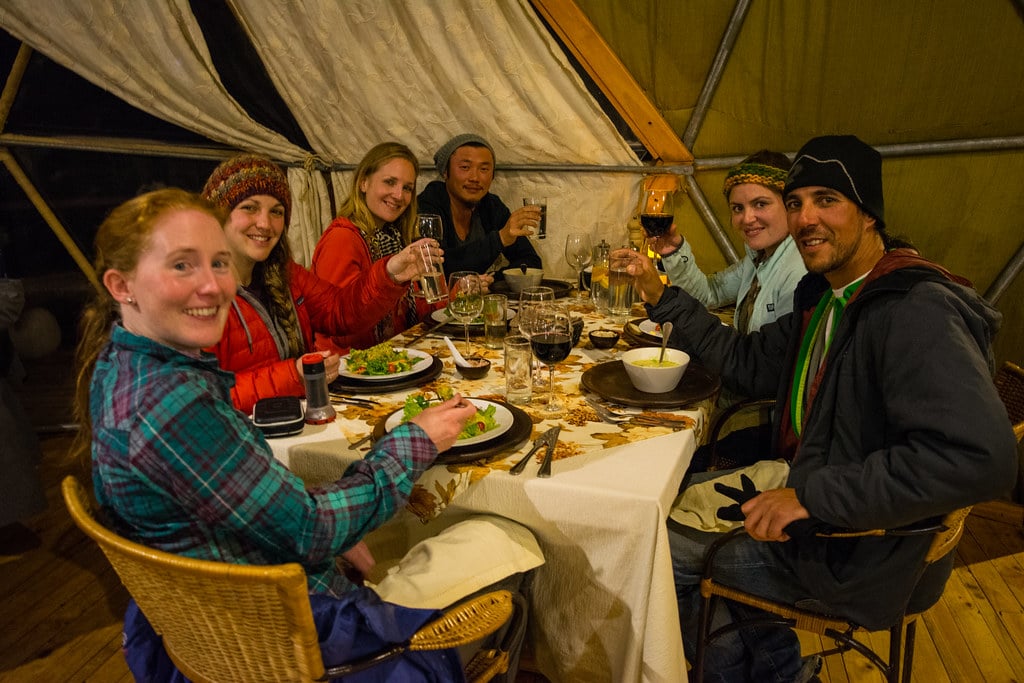 Last "salud!" of the trek!
Last "salud!" of the trek!Goodbye Patagonia!
Do you want more information? Visit cascada.travel and learn about our programs

